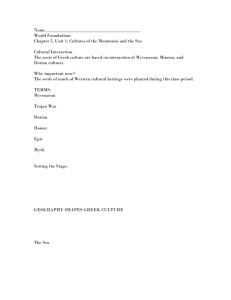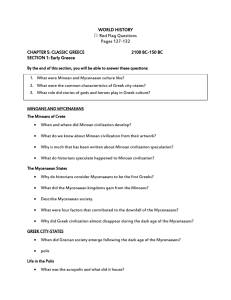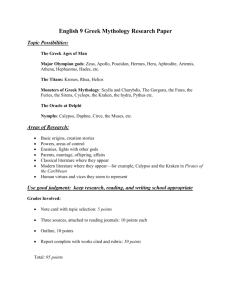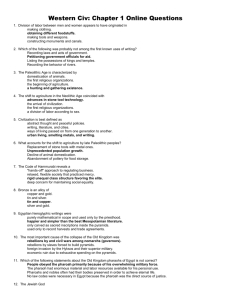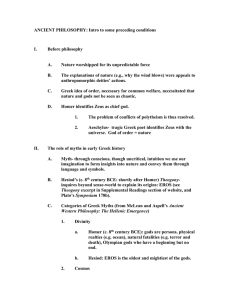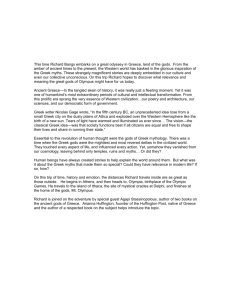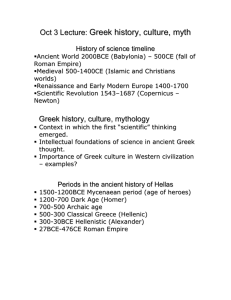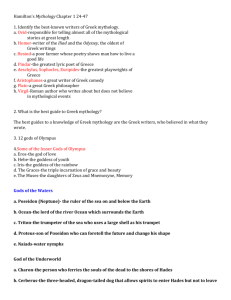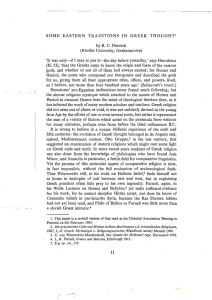Hum 2210 - Humanities 2210
advertisement
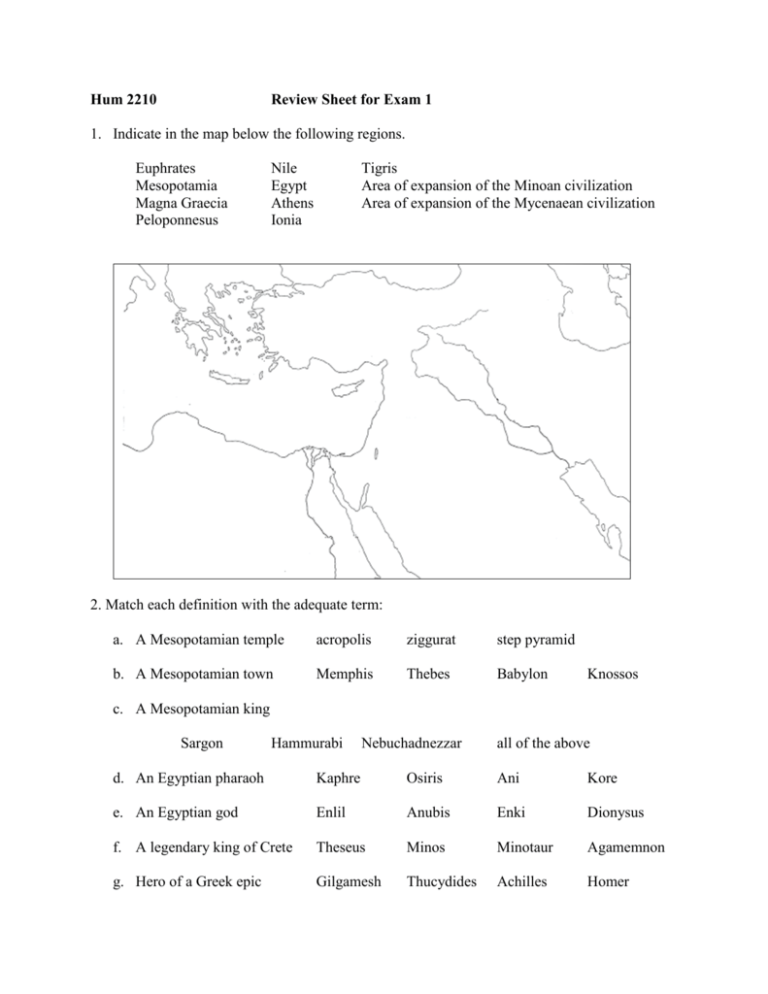
Hum 2210 Review Sheet for Exam 1 1. Indicate in the map below the following regions. Euphrates Mesopotamia Magna Graecia Peloponnesus Nile Egypt Athens Ionia Tigris Area of expansion of the Minoan civilization Area of expansion of the Mycenaean civilization 2. Match each definition with the adequate term: a. A Mesopotamian temple acropolis ziggurat step pyramid b. A Mesopotamian town Memphis Thebes Babylon Knossos c. A Mesopotamian king Sargon Hammurabi Nebuchadnezzar all of the above d. An Egyptian pharaoh Kaphre Osiris Ani Kore e. An Egyptian god Enlil Anubis Enki Dionysus f. A legendary king of Crete Theseus Minos Minotaur Agamemnon g. Hero of a Greek epic Gilgamesh Thucydides Achilles Homer h. Greek statesman Herodotus Pericles Sophocles Euripides i. War between Athens and Sparta Persian Wars j. Greek philosopher Spartan Wars Phidias Peloponnesian War Thermopylae War Plato Aeschylus all of the above k. Greek god of music and medicine Hermes Zeus Poseidon l. A chthonic deity Athena Earth Goddess kouros Doryphoros Kritios boy kouros Doryphoros Kritios boy Hera Apollo Isis m. A statue by Polykleitos Hermes and Dionysus n. A statue by Praxiteles Hermes and Dionysus o. A ionic temple Erechtheum Apollo at Delphi Parthenon Olympic Zeus in Athens 3. Indicate in which area the following people excelled. Add the dates (in centuries) in which they lived and their place of origin: Person Menkaure Socrates Alexander the Great Aristophanes Herodotus Pericles Hammurabi Hatshepsut Homer Title/ Occupation Place Date 4. Complete the statements: a) The human species of those who decorated the walls of caves with paintings is the ______________________________________. b) The time in which humans first discovered and developed agriculture and animal husbandry is called ______________________________. c) The writing system used in Mesopotamia is called _____________________________. d) The first written code of Law is _________________________________________. e) Three technological innovations introduced by Mesopotamians ____________________ __________________________________________________________________________ f) Two important Egyptians gods in the passage to the afterlife are ____________________ ___________________________________________________________________________ g) The economy of the Minoans was based on ____________________________________ h) Minoan art shows influences from ____________________ and _________________. 5. Explain the following terms according to their etymological origin: PANTHEISTIC: _____________________________________________ OLIGARCHY: ______________________________________________ ANTHOPOMORPHIC: _______________________________________ PALEOLITHIC: _____________________________________________ 6. Put these events in chronological order. ____ Persian Wars ____ Macedonian hegemony ____ Minoan civilization ____ Dorian invasions ____ Peloponnesian war ____ Emergence of the polis and colonization ____ Mycenaean hegemony ____ Alexander’s empire ____ Athenian hegemony Essay questions: Characteristics and purpose of Paleolithic paintings. What did Paleolithic artists paint? Where did they paint? Artistic features of their art (realistic, movement, interaction, perspective….) Main features of Mesopotamian religion: characteristics of the gods, relationship between gods and humans, means to preserve this relationship, reflection of the religion in the arts and architecture. Main features of Egyptian religion: characteristics of the gods, relationship between gods, rulers and humans, reflection of the religion in the arts (painting, sculpture) and architecture. Relate the geographical features of Egypt and Mesopotamia with the character of the civilizations which developed there: population, political organization, material resources (minerals, agricultural products), trade and communications. From your readings of the Iliad and from what you know about Mycenaean culture, what can you say about the Mycenaean way of life, their code of honor, their political structure, the appearance of their cities, their contribution to Classical Greek culture? Homer’s poems. Who is Homer? When and where did he live? What did he write about? What is an epic? What does it mean that Homer’s poems come from an oral tradition? What is the argument of the Iliad? Provide a summary. Historical overview of Greek civilization. What happened from the Dorian Invasions until the Empire of Alexander the Great. Name the major political organizations and their evolution, wars and changes in the center of power. Indicate the dates (in centuries). The representation of the human body. When were humans represented first in a work of art? How were they represented? Where there differences between male and female representations? How did this representation change over the centuries? Mention examples of canon, posture, intent of the work of art (idealization, anatomical study, search for beauty, narrative…) From your reading of Lysistrata, what can you say about the character of Greek Comedy? For whom was it performed? Who is Aristophanes making fun of in the play? When and where was Lysistrata performed? What is the subject of the play? What is the historical background? What can you infer about Athenian democracy from this play?
